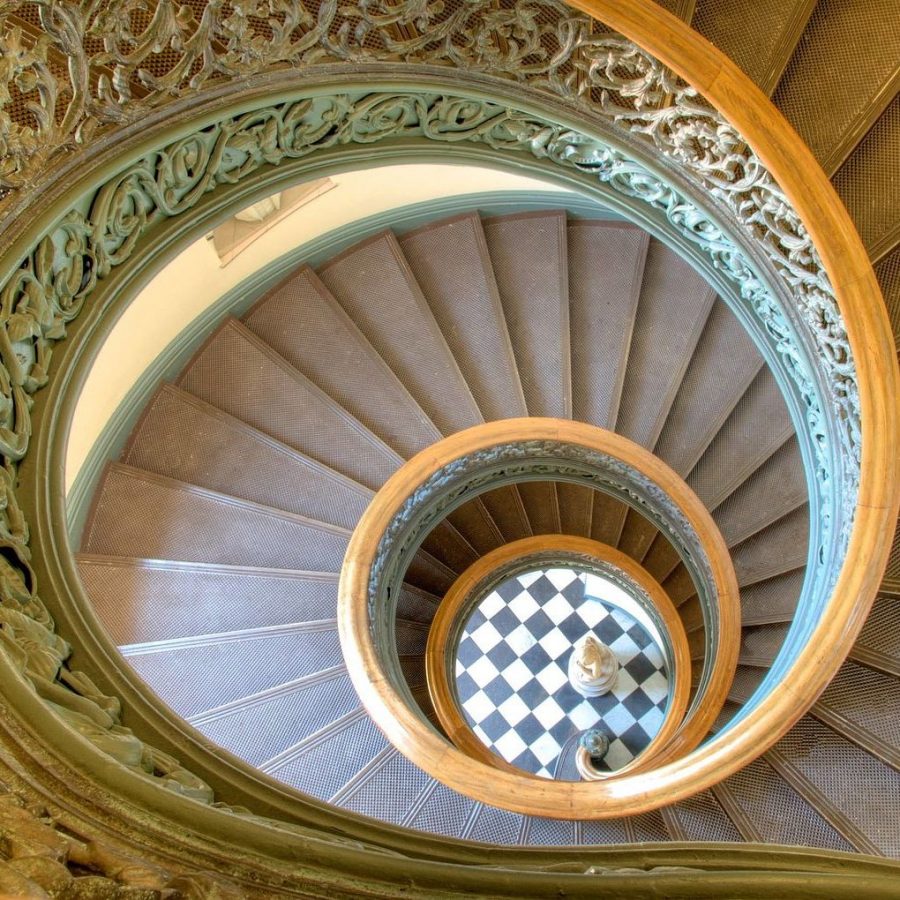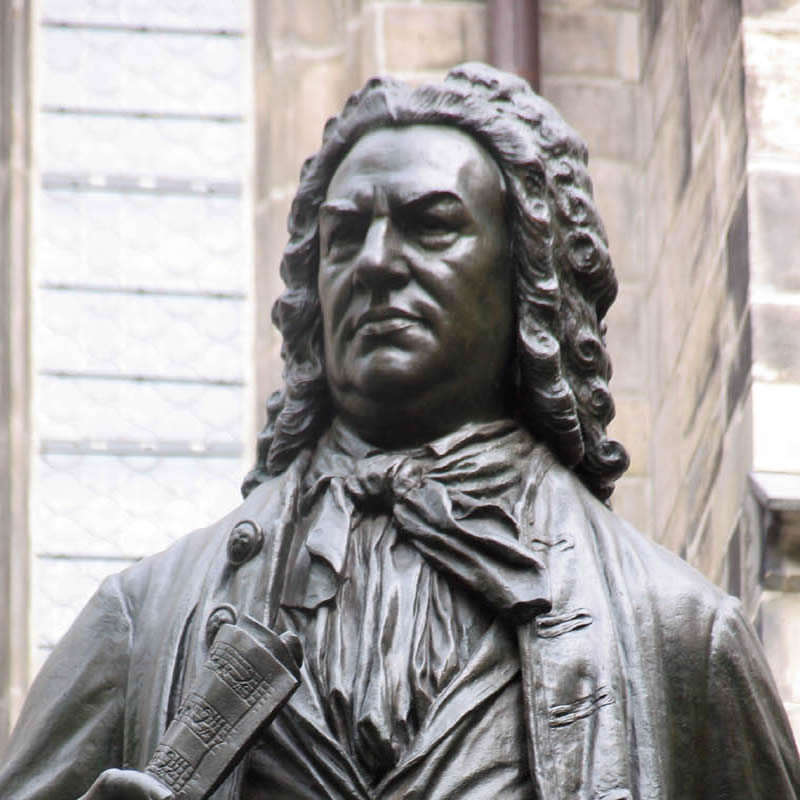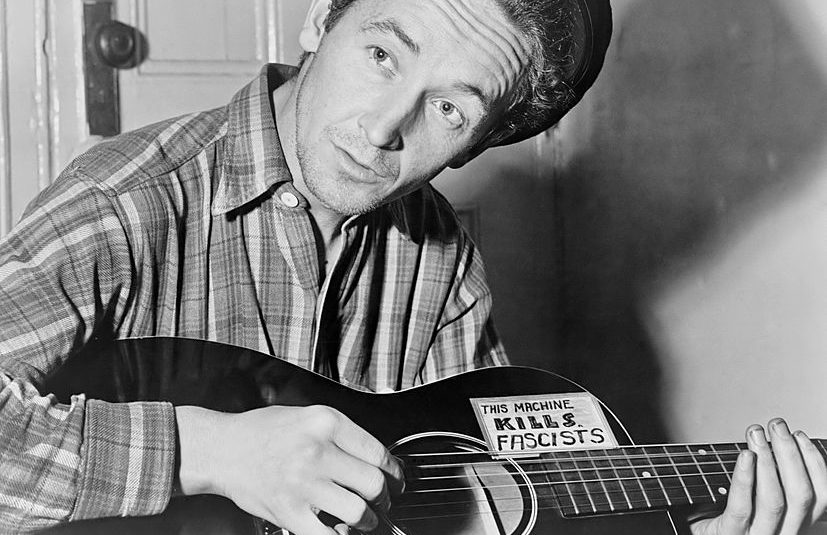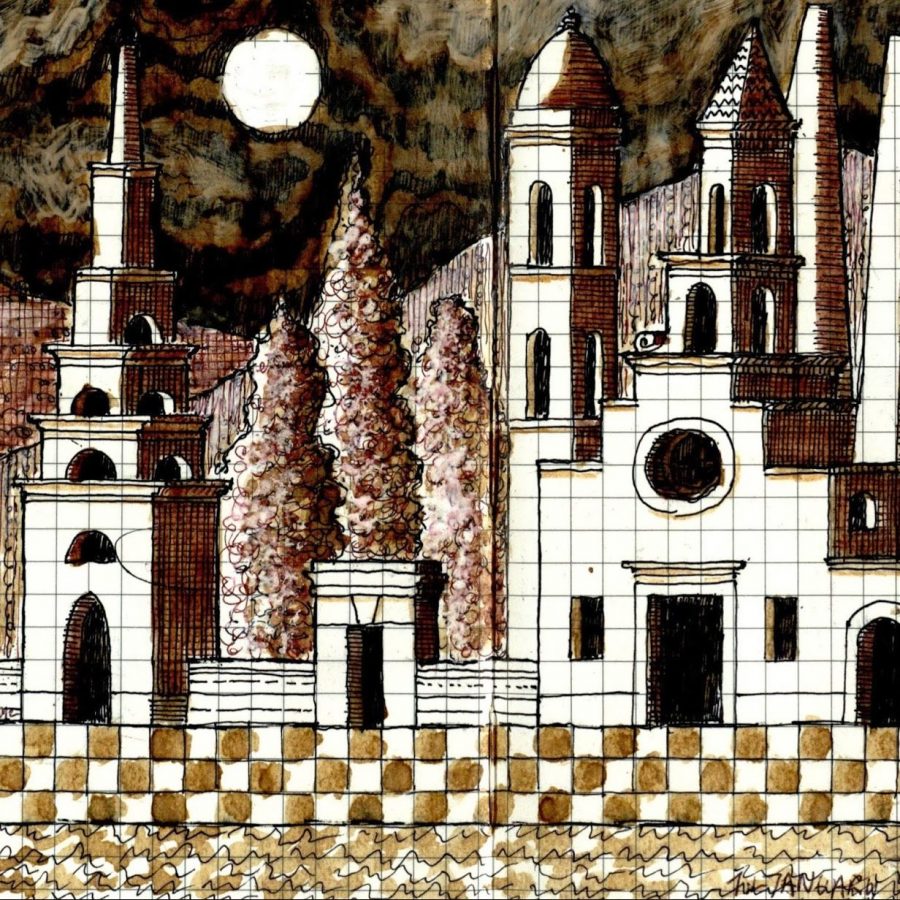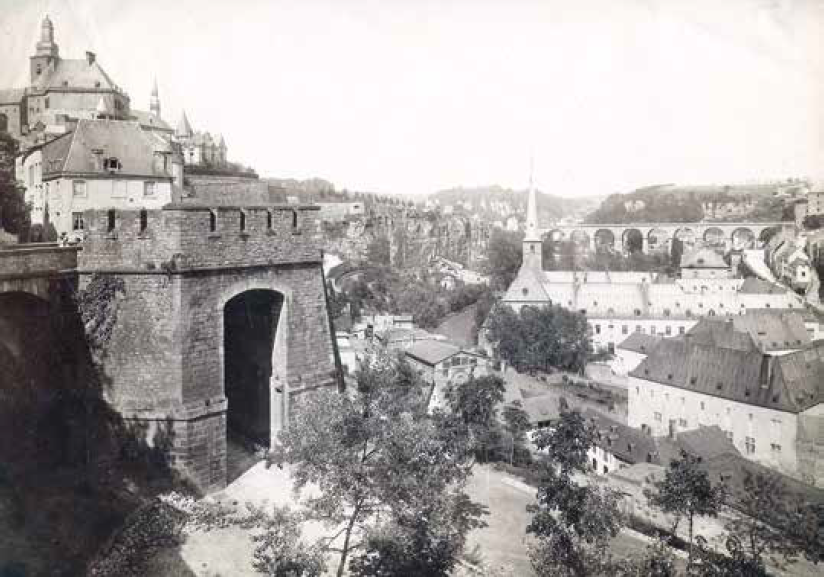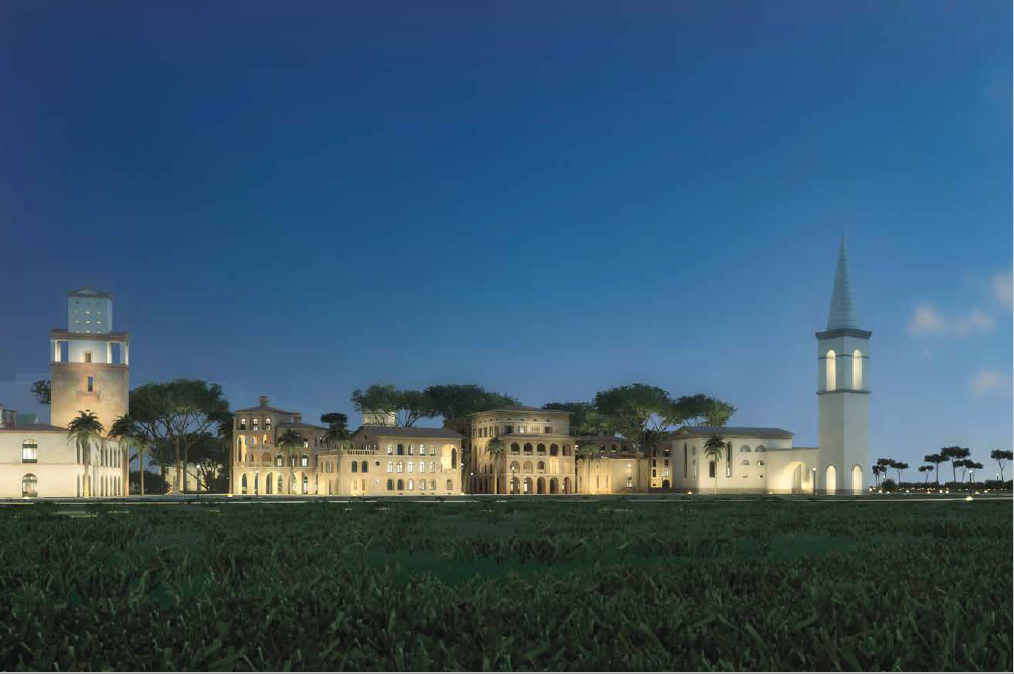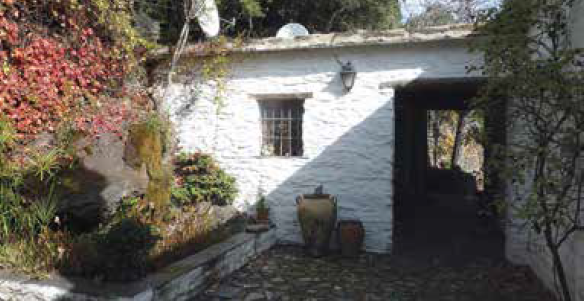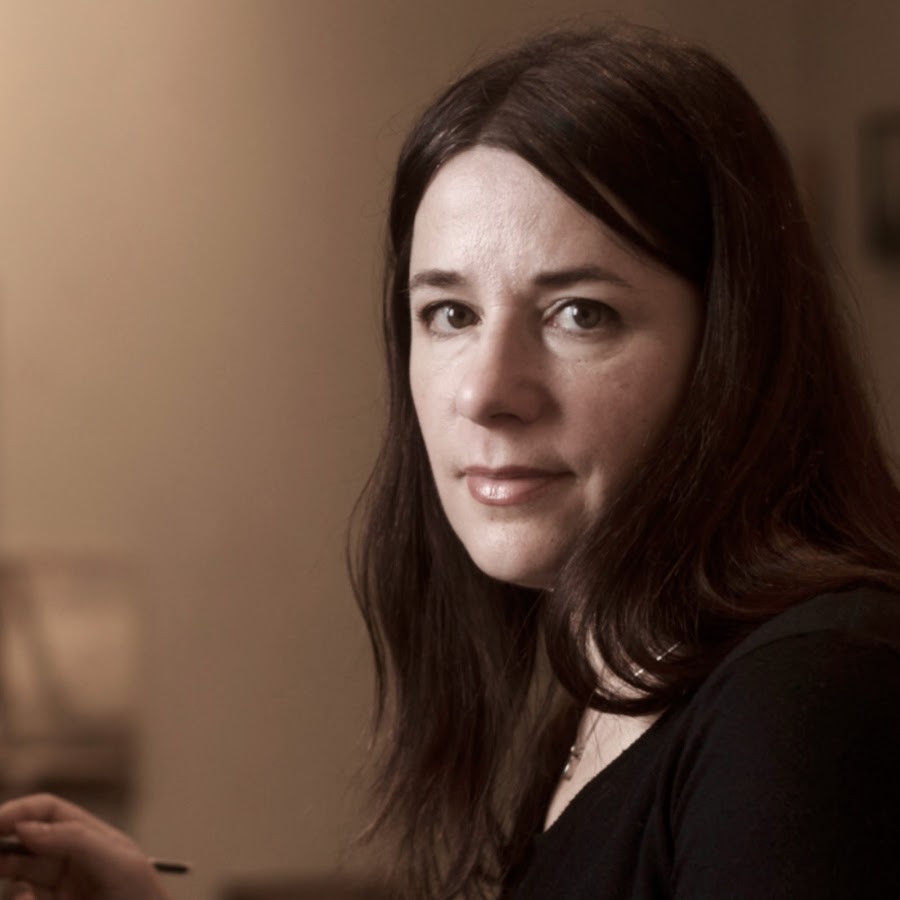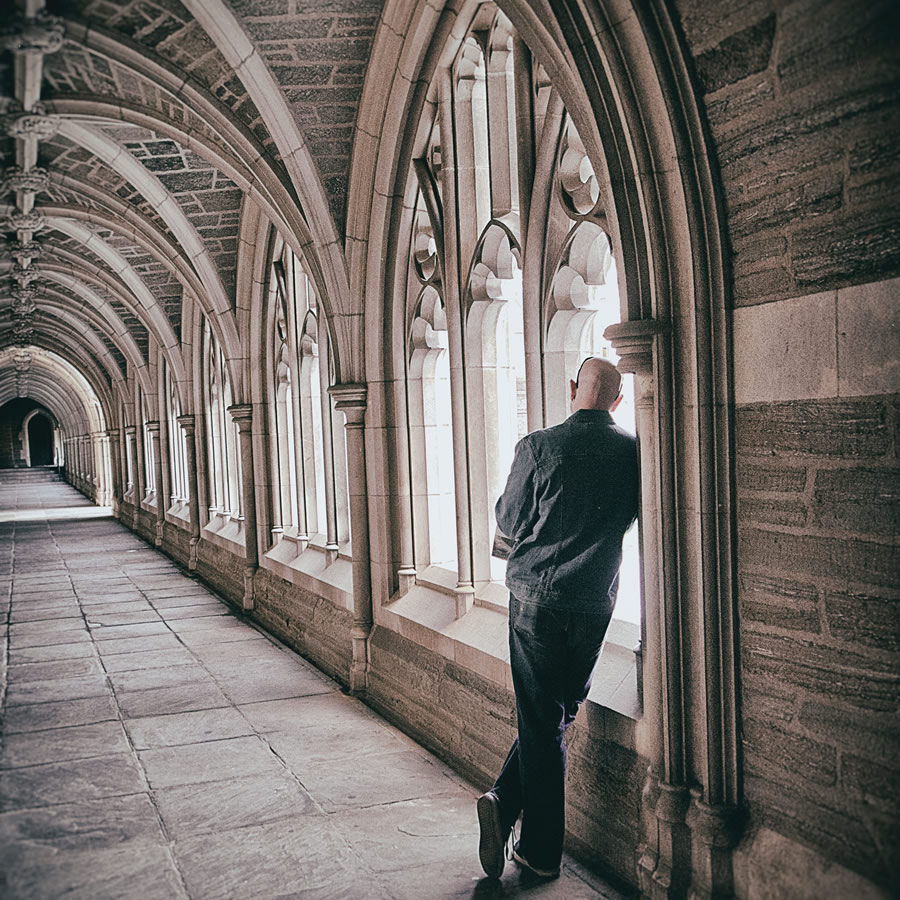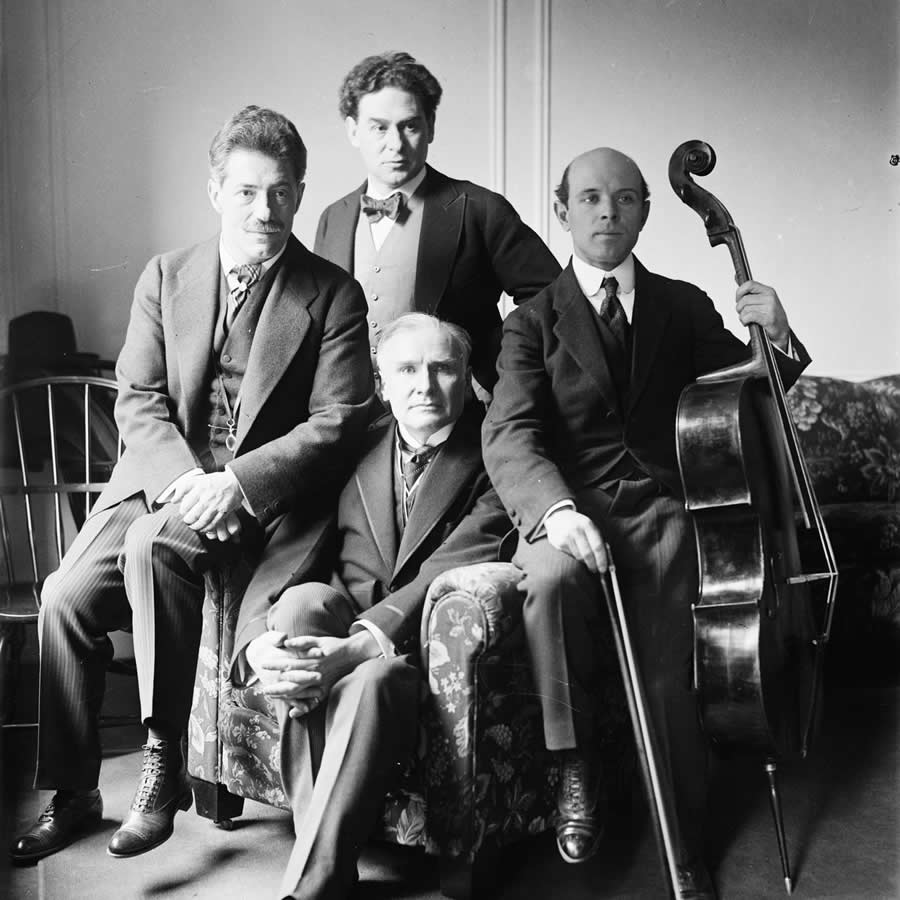America may be a young country, but it fairly dominated music in the twentieth century. When I say music, I mean classical music, but the statement applies equally to popular music – maybe even with more force. Think of Gershwin, Rodgers, Porter, and the jazz greats, just for starters. It all went wrong in about 1970 – you’re free to pick your own date – but that is another long, sour essay.
In classical music, America’s strength is a little short of astonishing. We are talking about a European art form, which the United States embraced with gusto. When the Declaration of Independence was signed, Mozart was already twenty; America had a lot of mud (and political genius and some other things). By the Civil War, we had little to commend us but Louis Moreau Gottschalk. But by the end of World War II, we were rolling.
Of course, Europe helped us immensely, by persecuting – when not trying to kill – so many of its people. America grew to dominance in classical music partly by default, as it did in other areas. Conductors like Reiner, Szell, and Solti may not have chosen to have American careers, but those were the careers they wound up having. Our musical institutions were built on the talent and drive of European émigrés. And those institutions are healthy now, despite clamorous claiming to the contrary. Will they continue to be healthy – even dominant – as the twenty-first century progresses? Probably so, as long as America remains welcoming, ambitious, and free.
To remark the preeminence of America is not to say that Europe is nothing – not at all. Vienna is still a worthy music capital, and Berlin has much to offer, and so does London, not to mention numerous smaller places, such as Oslo. But the United States is still the place where the action is, where big careers re made, where music-making is most predictably excellent – in the orchestral hall, in the opera house, and elsewhere. An acknowledgement of this should have no odor of chauvinism whatsoever; it is a matter of objectivity. Music is a universal, not a national, enterprise anyway, and people from all over the world come to America to make music, rendering this activity not so much American as human.
The death of classical music is frequently proclaimed, and it has ever been thus. As Charles Rosen once wrote, “The death of classical music is perhaps its oldest tradition.” The arguments in favor of death (if you will) are so tired and weak they are hardly worth confronting anymore. But we are usually drawn in. In my experience, some people actually enjoy predicting or announcing the death of classical music, because, when they do, others are apt to nod sadly and knowingly. To proclaim the death of classical music marks the proclaimer as a defender of civilization, and a foe of the destroyers.
One who doggedly counters the death idea is Gary Graffman, the pianist and (former)director of the Curtis Institute of Music in Philadelphia. He was even moved to title a recent speech “Dead Again”! He noted that he kept having to give essentially the same speech, because prophecies of doom would not let up. “Disaster is always just around the corner,” he said. But “one advantage of having reached the age of pontification” – Graffman is in his mid-seventies – “is that I actually lived through experiences identical to those which are now considered unique to our present philistine conditions.” He went on to give multiple examples, some of them amusing. Consider this: in 1961, RCA Victor wanted Horowitz to record an album of popular music. His wife, Wanda – the daughter of Toscanini – shouted to an executive, “Better you should open a whorehouse!” RCA canceled the pianist’s contract. Somehow, he survived.
When Graffman was coming up, the music business was puny compared with today. In the late 1940s, “there were only two major concert managements, with a total of about 40 pianists between them.” In 2001, Musical America – a professional bible – listed 624 pianists. “So maybe we should be worrying more about glut than decline.” Moreover, at mid-century, “New York had only one large concert hall, and – believe me, because I was there – very few performances were anywhere near sold out.” For Horowitz, Rubinstein, and Heifetz? Yes. But for Serkin, Milstein, and Piatigorsky, Carnegie Hall was not even half full. No one thought this condition odd or alarming. Indeed, “a half-empty (or half-full) hall” was “the norm.”
Zarin Mehta is eloquent on the subject of glut, as he is on other subjects. (Mehta was the executive director of the New York Philharmonic, and the brother of the conductor Zubin.) “If people think that classical music was healthier in earlier decades,” he says, “they should investigate how many seats were available then versus now.” The success of classical music in the 1960s and 1970s, when orchestras became full-time instead of part-time, “led to an explosion in every city” – and not just large ones, but simple burbs. Communities wanted their own orchestras. “Many, many more seats became available for classical music.” So “if ticket sales are deemed soft today, perhaps it’s a question of supply.”
I will take a little tour of the American music world, looking in on various facets. But here is a basic point: How you think classical music is doing depends, in large measure, on what your expectations are. If you expect classical music to be as popular as popular music, you will be sorely disappointed. As I frequently have cause to say to people, “That’s why they call it popular music, you know.” There will always be a type that can’t stand that the broad public fails to share his concerns, passions, loves. Many such people have an evangelizing, proselytizing spirit – they can hardly sleep at night knowing that their neighbors prefer musical dross to gold. They will not reconcile themselves to the fact that classical music will always be, as it has always been, a minority taste. But the minority – lucky us – has an abundance before it.
The great mezzo-soprano Marilyn Horne said to me, in an interview, “Classical music is under assault in this country.” This is an understandable – if strikingly dark – point of view, for in some ways we are slipping. For example, music education in grades K through 12 has all but ceased. And the song recital – a major Horne concern – is dismayingly rare. But in other respects, we are going gangbusters: Chamber music has exploded, for instance. You can hardly walk a block without encountering a chamber-music concert, or festival. As Gary Graffman pointed out to me, there used to be only the Budapest String Quartet, and its most prominent member, Alexander (Sasha) Schneider, liked to recall, “Vee vent by bus.” Now there is a comparatively huge number of musicians who make a living in chamber music, and they don’t go by bus.
Even in areas where we seem to be distressed, the news is mixed. The recording industry is currently moribund, but why? Because the record stores are groaning with albums already made. Never has so much music been available to so many, and so cheaply. As Zarin Mehta commented, “I started buying records when I was sixteen or seventeen. I don’t go to record stores anymore, because I have essentially everything I want. Do I need a fifth recording of the Ring cycle?” Furthermore, the Internet is now seen as a great robber of recordings, but it may prove a boon to music in the future. In addition, musicians are making CDs in their own homes or studios, at little expense, and selling them to interested parties.
So the business of music will evolve, as it always has. We may not be able to foresee its forms – but we can count on musical life.
For orchestras, times have changed dramatically since mid-century. Then, you could hardly make a living as an orchestral musician, even in the best orchestras. “The men,” as they were called, had to sell shoes, paint houses, and do other odd jobs in the summer, just to make ends meet. A fifty-two-week contract was only a dream; it is now an entrenched reality. To work in an orchestra is not to take a vow of poverty; pay in one of the big orchestras begins at about $100,000 a year; it soon rises.
Even aside from the top orchestras, there is an embarrassment of riches. Jack McAuliffe, (former) chief operating officer of the American Symphony Orchestra League, reports that there are about 1,800 orchestras in the fifty states. Of these 1,800, about 600 are either youth, conservatory, or collegiate orchestras. They are “important for the development of both orchestras and audiences,” says McAuliffe, “but they aren’t necessarily a factor in discussing the economics of orchestras today.” Of the remaining 1,200 “adult” orchestras, “you have orchestras in which everyone is paid, and, at the other end, orchestras in which no one is paid. Of the 1,200, about 350 fall into the category of professional orchestras, where the majority of members are paid, and participating for professional reasons, not merely for the enjoyment.”
In the past couple of seasons – since September 11 – orchestras have had trouble, as many businesses and other enterprises have. But, as McAuliffe notes, the decade of the 1990s was “probably the best ever for orchestras, with record attendance.” About 32 million seats were filled in the 2000–01 season, up 16 percent from ten years before. “During the late ’90s,” that roaring time, “virtually every orchestra was showing at least a small surplus, with many in the process of building substantial endowments – and the ones that had them already were increasing them.”
Since 9/11, we have, again, been in a “much more challenging time.” Most orchestras are worrying, but they are succeeding – because they are knuckling down. “Of the 350 professional orchestras,” says McAuliffe, “we’re aware of eight that haven’t made it – that have either ceased operations or filed for bankruptcy. That is a failure rate of three-quarters of one percent per year. For most industries, that would be downright enviable.” But, if a couple of orchestras stumble, the media tend to play it in death-of-classical-music tones. To be sure, says McAuliffe, the failure of an orchestra is no fun for that orchestra’s community, but part of economic life is that some institutions fail – and then, perhaps, recover, get reconstituted, as has happened with many orchestras. In the late 1980s and early 1990s – another difficult period – eight orchestras went under (by coincidence, the same number that would succumb a decade later). In time, however, each of those eight communities gained an orchestra of approximately the same size and scope of the one it lost. For example, the Denver Symphony came back as the Colorado Symphony. The orchestra in Birmingham came back as the Alabama Symphony. In most such cases, the same basic group plays under a new name, and under different governance.
Quite recently, Pittsburgh suffered a bankruptcy scare. The orchestra there is superb, bearing a storied past. But through the years, the PSO was not supported much by the community at large – that is, with donations – because a few prominent citizens, most of them named Heinz, took care of it. Pittsburghers in general did not have the sense that they needed to contribute in order to have an orchestra. But the prospect of bankruptcy jolted them awake – and they responded with their contributions, utterly unwilling to see their orchestra expire, or even flag.
McAuliffe sums up: “Orchestras are still a robust part of the artistic life of an awful lot of communities. In fact, they are often centerpieces of that artistic life, forming the basis of opera companies, dance companies, music education in schools” (such as it is). Orchestras will never “just work,” without effort – “it really takes dedication.” But “interest in this art form isn’t dying; it’s just an expensive form of art to support.”
Not only are today’s orchestras robust, they have sturdy homes to live in – in many cases, new ones. Listen to Robert Harth, executive and artistic director of Carnegie Hall: “To those who would sing the swan song of classical music’s death, I would point out the fact that the most talked about building on the planet was built for classical music.”* Harth made that statement in October 2003, and he was speaking of Disney Hall in Los Angeles, designed by Frank Gehry. “It’s a magnificent building, a life-changing building, not just for the L.A. Philharmonic, but for that entire city. And that makes a dramatic and positive statement about classical music.” Jack McAuliffe would point to Newark, too – yes, Newark: “The New Jersey Performing Arts Center was built in the middle of nothing, and it has spawned all sorts of development. It is now a pleasant experience to go to Newark. I guarantee you that wasn’t the case ten years ago.” And “the New Jersey Symphony is thriving.”
Other new halls include the Kimmel Center in Philadelphia, Benaroya Hall in Seattle, the Max M. Fisher Center in Detroit (nicknamed the Max), The Meyerson Center in Dallas, Bass Hall in Fort Worth, Jacoby Hall in Jacksonville, and the Schuster Center in Dayton. Robert Harth adds, “Atlanta is building a new concert hall, and Toronto just redid theirs. Severance Hall in Cleveland has been completely revamped. This is ‘dying’?”
But Marilyn Horne sounds a cautionary note. In Greenville, South Carolina, they built the Peace Center, a fabulous performing-arts complex. (It is named for a philanthropic family named Peace, not for the concept.) The center “has a recital hall, a concert hall, and extraordinary acoustics,” says Horne,
but as the man responsible told me, “It’s easier to raise money than to put a body in a seat.” So what did he have to bring in to put bodies in the seats? Les Miz, Phantom of the Opera, and so on. There’s nothing wrong with bringing those pieces in, but it’s not classical music, and that is worrying.
It is indeed: but in 2003–04, the Peace Center had not only Les Miz – and Seussical, for that matter – but the Emerson String Quartet (part of this chamber boom I mentioned).
A second cautionary note comes from Sedgwick Clark, editor of Musical America. He is concerned about the cost of all this music building. “We must take stock of what we’re spending, and control our costs. I look at Disney Hall, and it’s an extraordinary thing, but it’s going to cost an arm and a leg to maintain.” At Disney, “the cheapest seat will be $35. To sit in the orchestra will be $120. For a concert! Maybe I’ve just gotten old, but the fact of the matter is, $120 for a concert – how many CDs can I guy for that amount? This is a serious problem.” Our new orchestral halls are impressive, Clark notes, but “if they’re not sold out, or close to sold out, the orchestras have a terrible time.” There are those generous salaries to look after, and employee benefits, and pension plans.
Fundraising in music is a special art. Beverly Sills knows quite a bit about it, and about fundraising in general. “I raised $100 million for the March of Dimes,” she informs me,
and hundreds of millions for other charities. Medical causes do better than music. If you have some disease to cure, you’re not going to want to fork over millions for another production of La Bohème. But I say in all my speeches: “Art is the signature of civilization.” We dance for joy, our hearts sing. When we’re little children, we take crayons and know immediately how to scribble. When my husband and I moved into a new apartment, the first thing we did, poor as we were, was paint the walls and hang up Mama’s pictures. In the car, we want the radio on. We don’t want to be in a silent ambiance.
So she tells her audiences that the arts are not a luxury, and they – at least for her, a woman hard to turn down – come through.
Mention of Beverly Sills leads us to the opera. It’s not easy to be gloomy about this slice of music, no matter how hard you try. Marc Scorca, the president of Opera America, supplies the essential facts: In the second half of the twentieth century, opera in the United States grew enormously – it was practically a boom. Opera America now has 115 member companies there are companies in all but a handful of states. Aside from these, “there are many smaller, community-based endeavors, and lots of university and conservatory opera programs that put on performances for paying audiences.” Of the 115, fully three-quarters have been established since 1960.
Understandably, opera is “the most expensive of the traditional performing arts,” as Scorca says. “One of the reasons we see opera-company formation as a relatively recent phenomenon is that the financial and infrastructural requirements of opera are considerable: It takes a long time for a community to have a critical mass of audience members and donors prepared to sustain a company. You can’t put on an opera very spontaneously.” No, you have to have a chorus and an orchestra; you need technicians, stagehands, a costumer, a stage designer – and that’s not even mentioning the soloists. Plus, opera “is traditionally performed in a theater with an orchestra pit, and not every community has one of those. You can put on a play with two characters in a store front. You can have a dance program in a loft, as long as it doesn’t have too many pillars. But opera is a formidable undertaking.
Therefore, the public must want it, for these companies to be born and to succeed. Scorca explains that opera is “a multimedia art form in a multimedia world.” It includes texts, visual images, drama, often dance – “and these components are very much part of our popular culture.” Opera
doesn’t ask you to sit and enjoy a purely auditory experience. It involves you in every way that other contemporary entertainments involve you. As people seek a classical-arts experience that is still based on the multimedia sensory experience they have enjoyed in the popular culture, opera is the classical art form they can respond to.
One boost to opera was the advent of titles – supertitles, seatback titles, those lines of words that help an audience member understand what’s happening onstage. Says Beverly Sills, “I worked very hard to bring titles into the opera. Jimmy said, ‘Over my dead body.’” (That would be James Levine, artistic director of the Metropolitan Opera.) But titles came to the Met, to the satisfaction of almost everybody, and with Levine still breathing in the pit. Marc Scorca confirms that titles made for “a huge improvement in reaching out to new audiences.” Before, there was always a severe language barrier to overcome. Now people do not sit flummoxed (except by plots and other operatic strangeness). Some traditionalists maintain that titles break an important visual connection to the performer – and they are right – but most of us judge it a sacrifice worth making.
The reigning house in America, of course – and in the world – is the Met. It has no real rivals, as its (former)general manager, Joseph Volpe, points out (not boasting); it is a unique institution. There are other companies as renowned – La Scala in Milan, Convent Garden in London, the Staatsoper in Vienna – but no one company that does so much. Volpe notes that La Scala puts on seventy or eighty performances a season: “To be general manager there would be a semi-retirement job”! The Met has a full-time orchestra and a full-time chorus, and “it’s important that they work” – more or less continuously. In Vienna, “they’re known for putting on a production with no rehearsal at all, or just one rehearsal. They’re also known for having one leading cast member,” with the rest plucked from the company. “We are, and have been historically, noted for having top singers.” But, Volpe continues,
as the season expands, this becomes more and more difficult, particularly considering travel. A lot depends on the dollar. Our fees are lower than in the European houses. In Italy, they’ll pay $30,000 for a single performance. They’ll deny it, but it’s true. Our top fee is $15,000. So, what’s going to happen is, some singers will spend more time in Europe than in the United States.
Volpe cites Bryn Terfel, the beloved bass-baritone from Wales:
He has three children, and it’s easy for him to jump on a plane and fly to a city in Europe, sing, and go home. To come to the Met is a larger commitment. You end up here a long period of time. You can’t fly home to be back with the family, as you can in Europe. The days of great singes staying in America are over.
Like everyone else, the Met has taken a financial hit in the post-9/11 environment. Ticket sales and donations are down. But the institution is fundamentally sound. As Volpe observes, a house that survived the Great Depression can survive a lot. You just have to roll with events, and not panic.
A particular concern in recent days has been whether the famous Met radio broadcasts will continue. They began in 1931, and in 1940 came under the sponsorship of Texaco. In 2003, that company – now ChevronTexaco – announced that it would quit sponsoring the broadcasts. This was no small matter to the Met, because, as Volpe points out, radio is responsible for a good deal of its national and international reputation. Three million people listen to the broadcasts in the United States, and seven million listen in forty-one other countries. “That’s very important to the Met’s image.” It takes about $7 million a year to produce these radio broadcasts. At this writing, the Met has not secured permanent sponsorship, but Volpe and Beverly Sills – who is chairman of the Met’s board – are confident that they will. There is little reason to doubt them.
About the prospect of making records again, it’s hard to be as confident. The recording industry is now stagnant, as I have mentioned. Opera CDs coming out today, says Volpe, tend to be produced in Europe, “with orchestras that are paid a very small fee.” Unionized orchestras in the U.S. would have none of that. “What’s been happening in our country is that record companies have been saying for years and years and years. ‘We can’t afford to pay what the musicians demand, and we can’t make any money off of classical music.’ So business has dried up.” And, “frankly, how many Rosenkavaliers do you need?” (Back to the glut problem.) Continues Volpe, “The only way the Met will get back into recording is if we produce recordings live, without paying fees, and then have some kind of revenue sharing with our people.”
The general manager recounts a conversation with Renée Fleming, the celebrated soprano, who opened the 2003–04 Met season as Violetta. “Renée was unhappy because there was no television for her Traviata. I told her that we would broadcast on radio and that maybe, someday, there would be a recording of that.” In truth, “that’s the real McCoy,” the live broadcast, with no touching up, no corrective takes, “and I don’t think it’s so horrible” to present the company that way.
Volpe and the Met are often criticized for producing too few new operas – for being a mere “museum,” if not a “mausoleum.” The GM protests,
If you look at the last ten years, our track record with contemporary works is probably as good as any opera company’s. But understand something: Commissioned works are very, very expensive. We have to fund the commissioning and fund the production. If we can do one every three years, that would be a nice pace. What we can do depends on our financial situation.
Sure, in the good old days, the Met produced one new opera after another. But “do you know what?” asks Volpe. “Composers would come in off the street, shove a manuscript into your hand, and say, ‘Here’s an opera. Wanna put it on?’ They didn’t start with, ‘First give me $350,000, then …’ And remember, we rehearse what we perform: We don’t put things onstage unrehearsed.” Rehearsal, like time – being time – is money.
The Met seems permanent, unbudgeable, like the U.S. Capitol. Will it be forever? “I think it will be forever,” says the GM,
because there are so many people who love this art form. The question is, What does that mean? The Met in the form of today? Maybe not. Does it mean thirty-two weeks of performances a year? Maybe not. So the question is – I hate the word “evolve.” When I first started out, I hated that word. I said, “Don’t tell me about ‘evolve.’ You’ve got to be in charge and decide things, not just let them evolve!”
But Joe Volpe is more comfortable with that concept now, as one is often forced to become.
* Mr. Harth died in January 2004.
